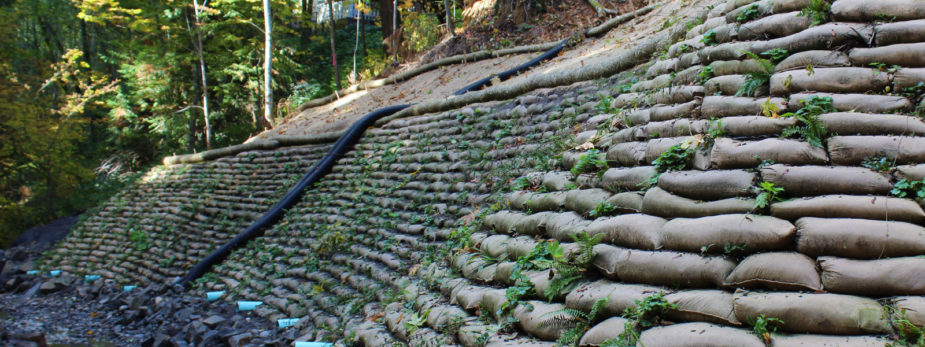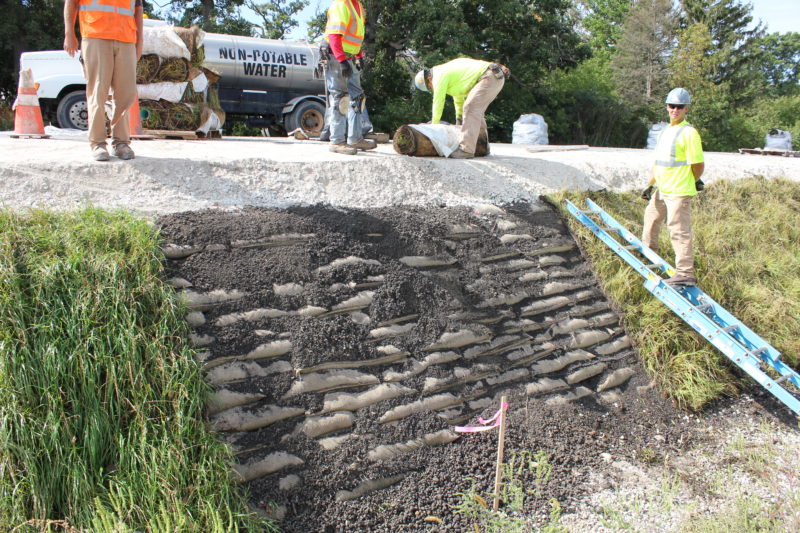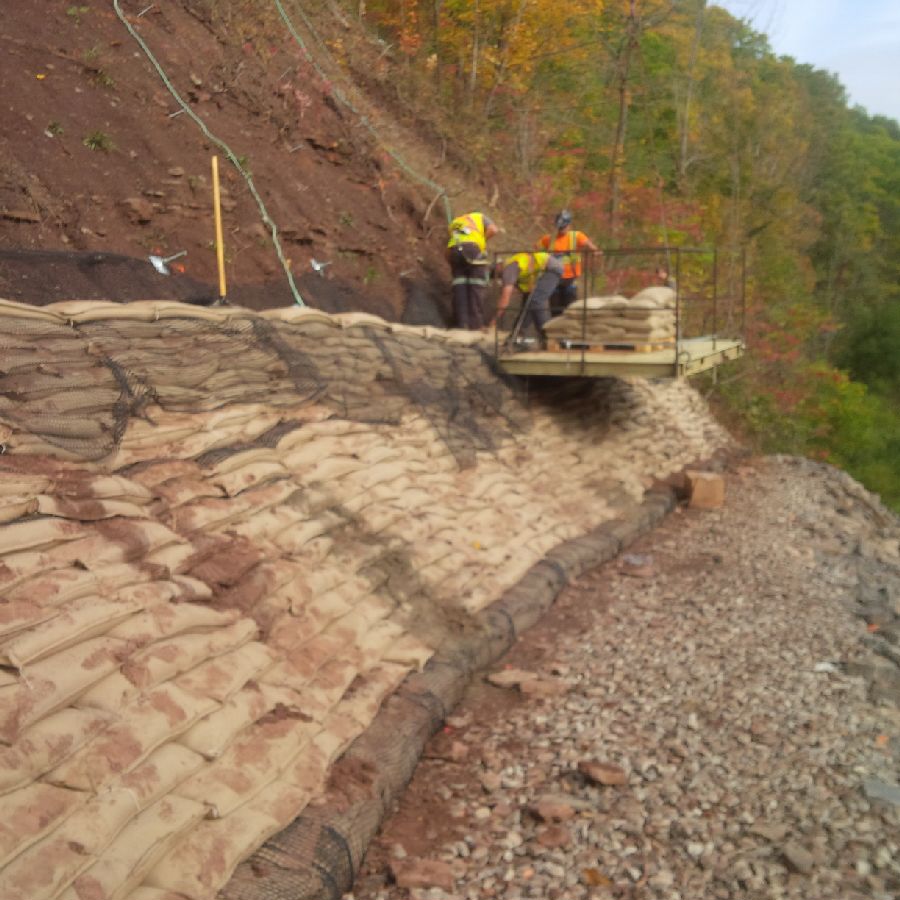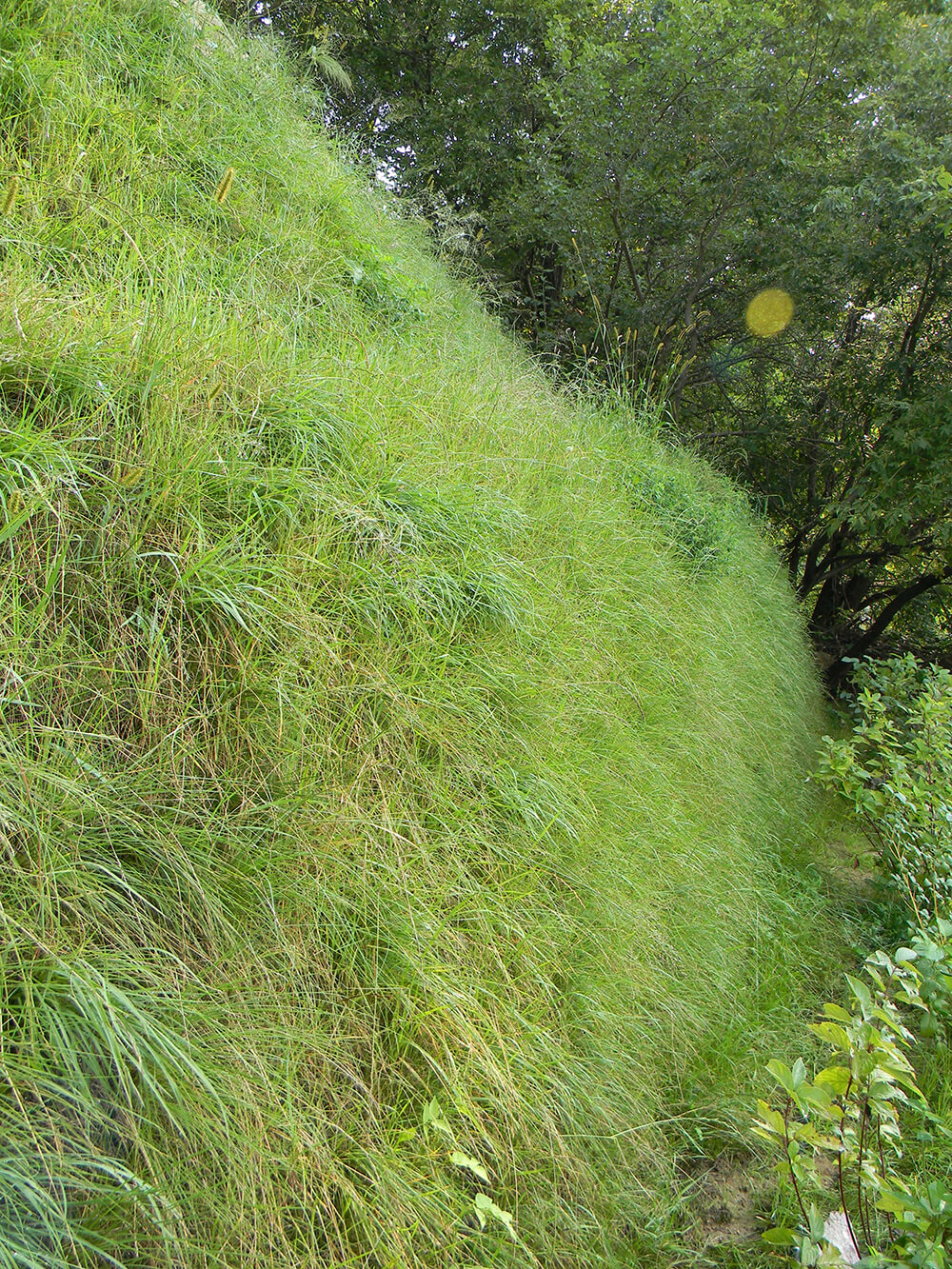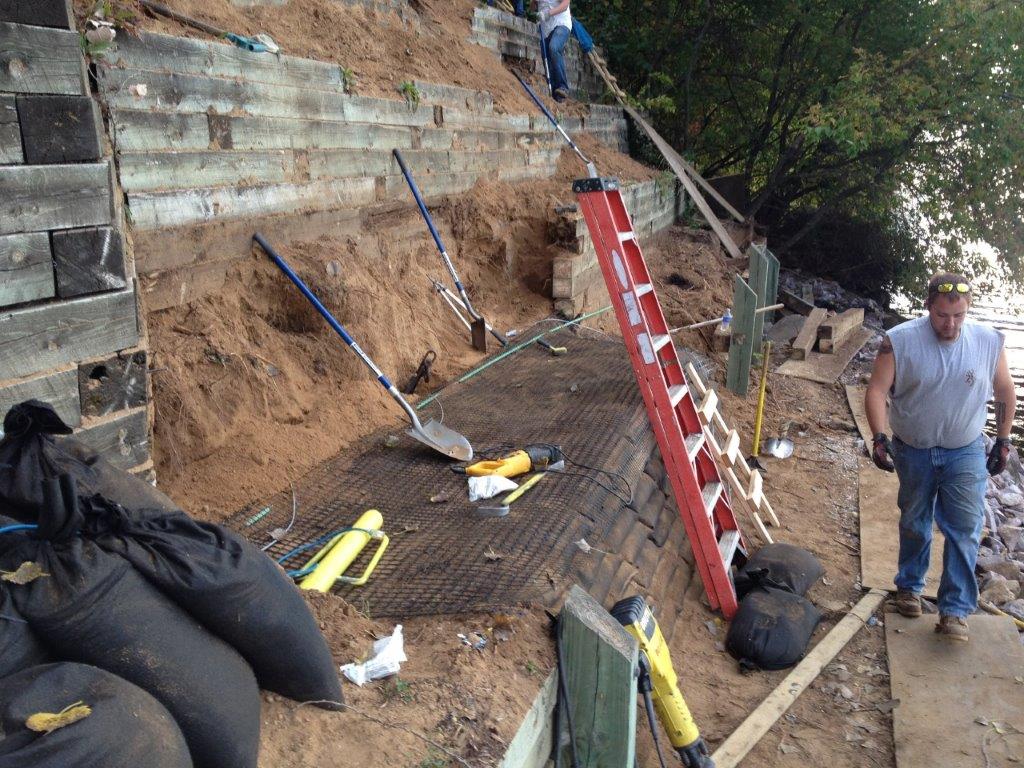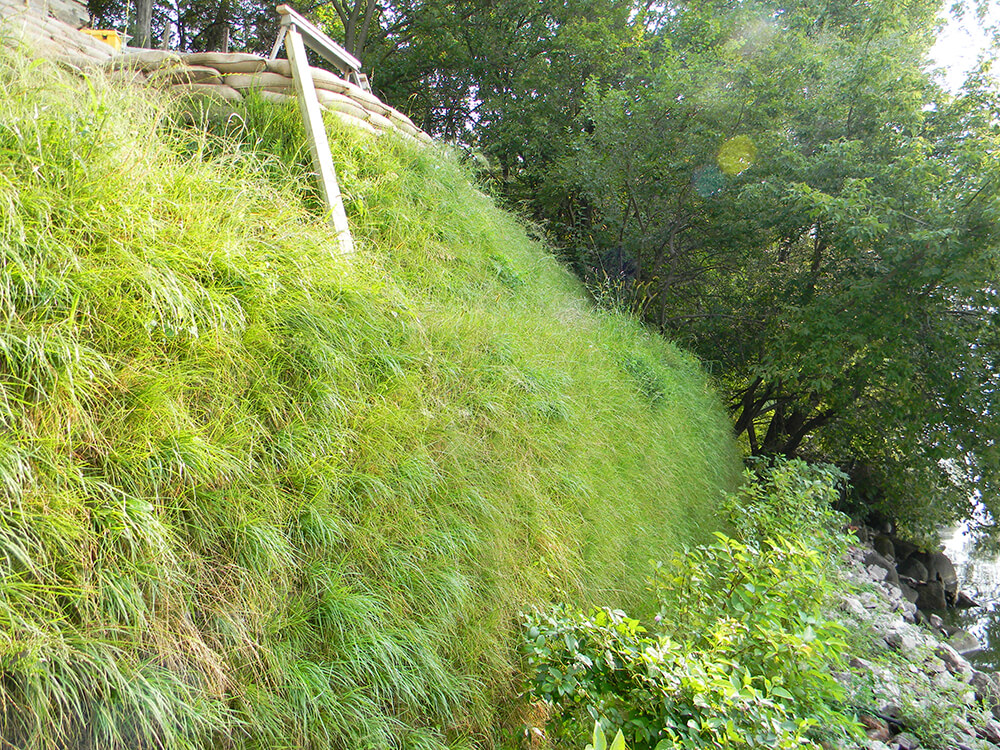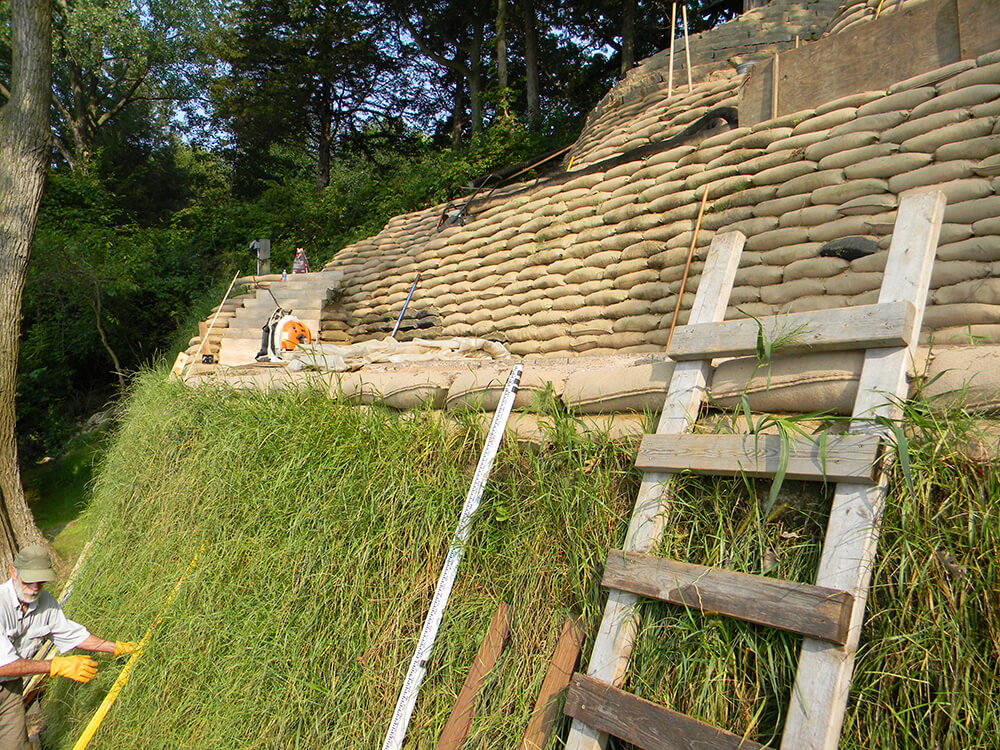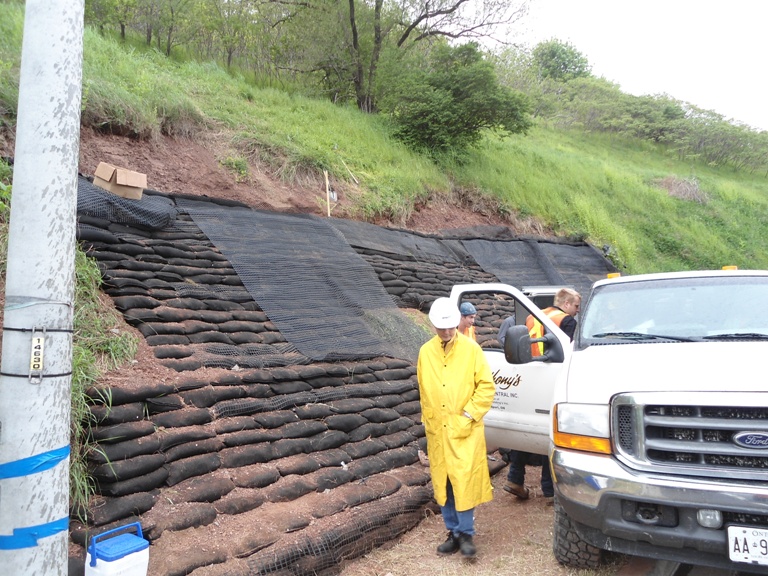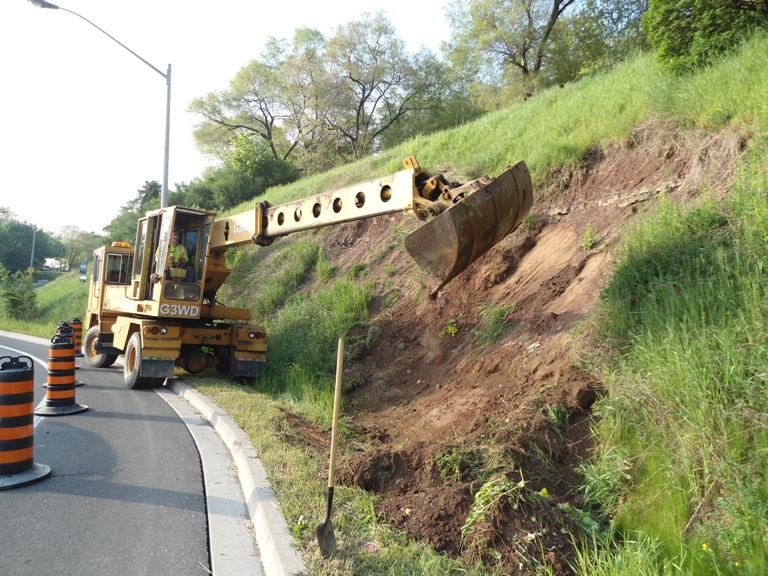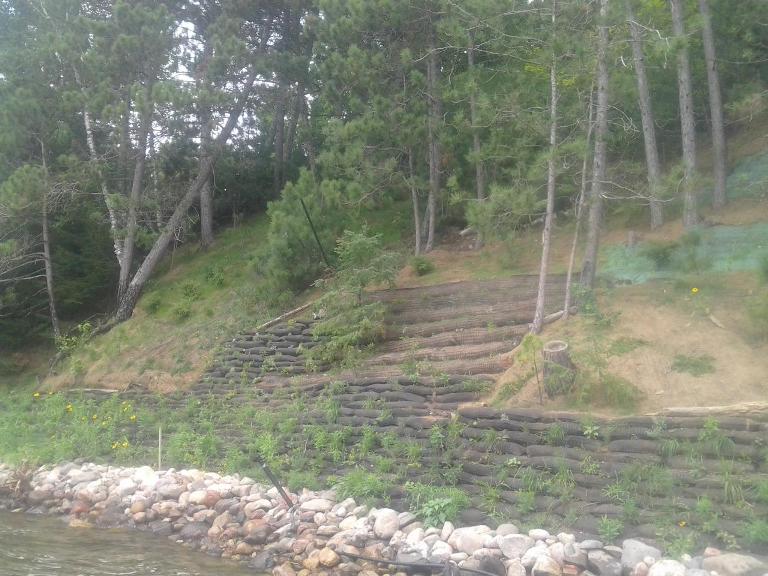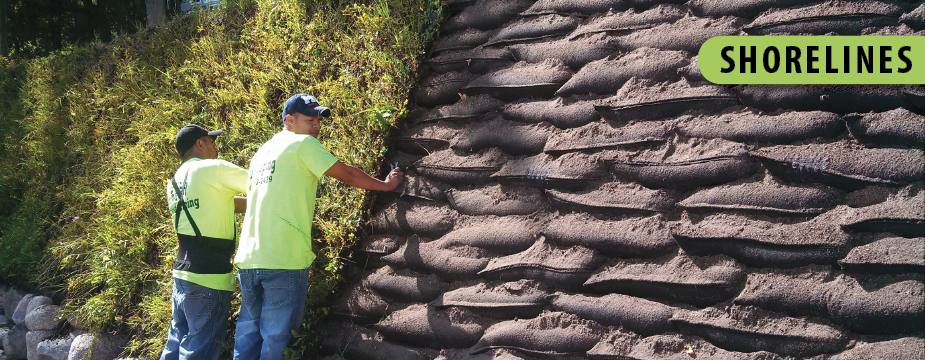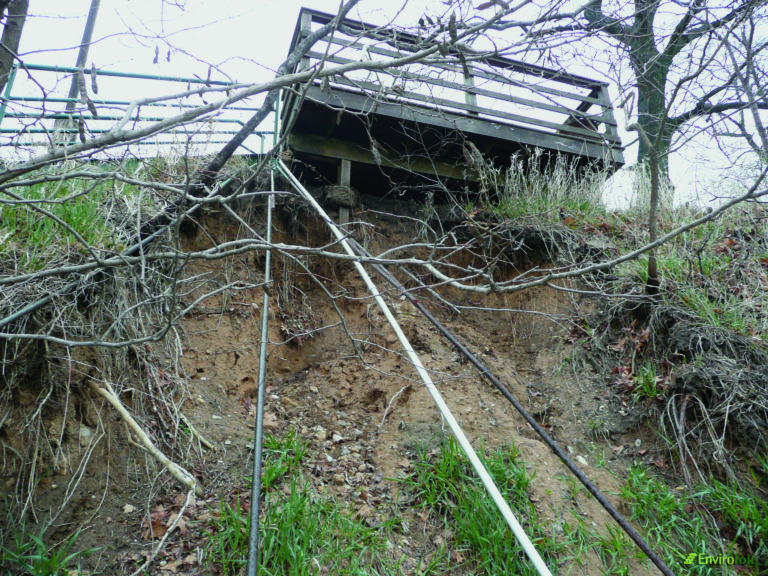
Slope Failure

Reinforcing Slope
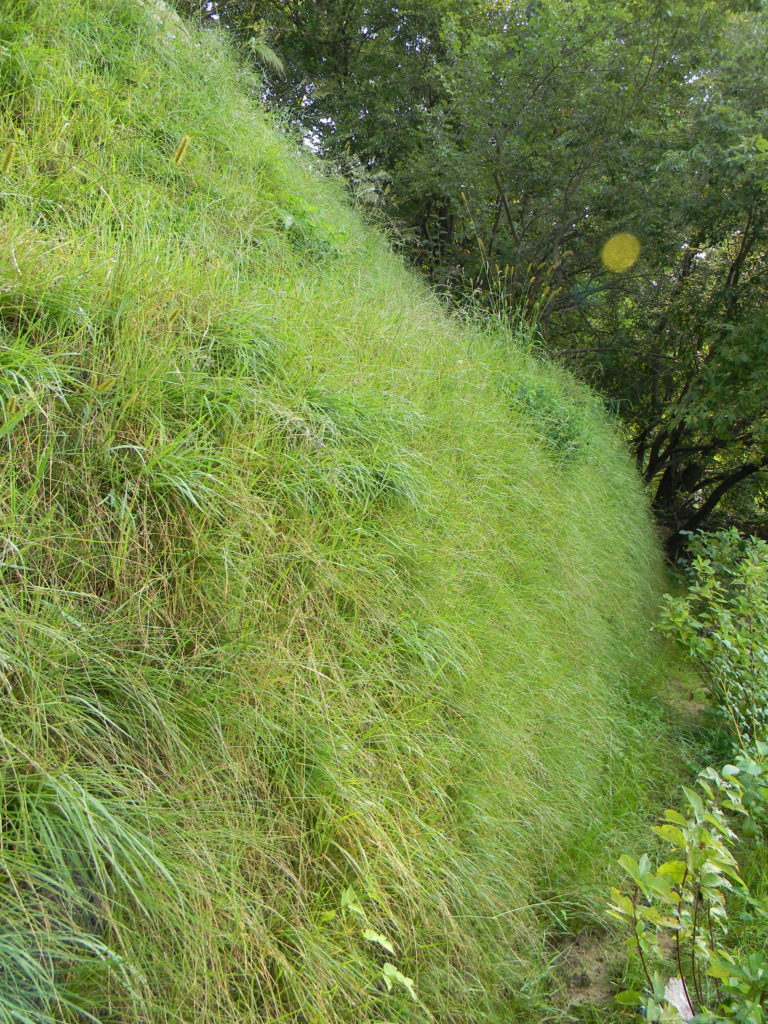
FInal Reinforced Slope
What is Slope Failure?
Slope failure refers to the downslope movement of rock debris and soil in response to gravitational stresses. It is a geohazard that can impact infrastructure – anything from individual homes to municipal sewer networks. Slope failures are often a result of weather events, poor soil structures, poor drainage and/ or land use. Each of these influences can lower the soil’s ability to resist shearing, leading to slope instability.
The two most common types of slope failures are rotational failures and creep failures. Rotational failures typically occur in silt or clay soils and are indicated by curved cracks, and large expanses of exposed soils. Soil tends to slide in mass and migrate the toe of the slope. Common causes include wet or poorly drained soils and overdevelopment at the top of slope.
Creep failures are more common in sandy soils. Creep tends to be slower and harder to physically identify, as vegetation tends to remain and cover up the eroded gullies. Common causes of creep failure are freeze-thaw, overland water flow and inadequate shear strength. Creep is one of the primary causes of project failure.
Traditional erosion control products only address surface failure and are limited in their ability to stabilize steep slopes. Slopes can be stabilized by either introducing stabilizing forces or limiting driving forces. This is achieved by either adding a surface cover to the slope, excavating and changing slope geometry, or adding support structures to reinforce the slope or using drainage to control groundwater.
Ideal solutions to slope failure aim to not only fix the surfaces of the slope, but also stabilize the soil, allowing vegetation to establish and flourish. Site drainage and adequate strength are the keys to a successful solution. Gravity and tie-back methods can achieve this permanent vegetative stabilization which achieves long-term solutions to slope failure.

